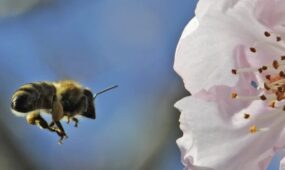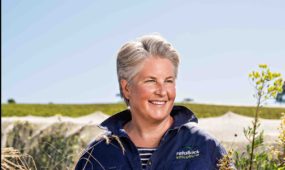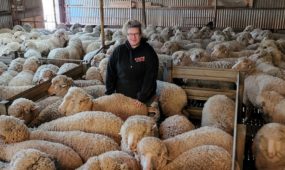Early signs point to a stand-out 2016 vintage in South Australia
Primary Industries
THE rare combination of high quality grapes and above average yields in several of Australia’s premier wine regions have growers and winemakers confident the 2016 vintage will be one to remember.

Sign up to receive notifications about new stories in this category.
Thank you for subscribing to story notifications.
The vintage is in full swing in South Australia’s premier wine regions including the Barossa Valley, McLaren Vale, Clare Valley, Riverland, Adelaide Hills, Eden Valley and Coonawarra.
A warmer than average spring across the state helped strong canopy growth while timely summer rain in many regions in January has led to good yields without impacting on quality.
South Australia is Australia’s largest wine-producing state, accounting for almost half of the national crush.
BAROSSA VALLEY
The Barossa Valley produces world-renowned brands such as Penfolds Grange, Jacob’s Creek and Wolf Blass.
Barossa Grape & Wine Association Viticultural Development Officer Nicki Robins said the 2016 Barossa vintage was shaping as a stand-out, with strong indications of very high quality and yields generally above the five-year average.
“Winemakers are reporting dense colour and rich, vibrant flavours in shiraz picked to date,” she said.
“A fortuitous 1.5 inches (40mm) of rain fell from January 21, followed by mild conditions throughout late January/early February, which has seen phenology keeping up with sugar levels in shiraz – lots of brown, crunchy seeds early, yielding rich, ripe tannins.”
Robins said the mild conditions had also been kind to Barossa Valley whites, including semillon and chardonnay, which had been building delicate flavours slowly, while retaining crisp acid levels.
Cabernet sauvignon, grenache and mataro in the region are yet to be picked.
Growers have been harvesting Barossa Valley white grapes since late January with chardonnay yields reported to be up to 20 per cent above estimates while semillon yield is variable, depending on irrigation practices.
Harvest of Barossa Valley shiraz started around February 10 with close to 50 per cent picked. Yields reported for Shiraz so far have been between average to 20 per cent above the five-year average.
In nearby Eden Valley, shiraz is holding up well, but yields are looking slightly below average. Cabernet sauvignon and riesling quality and yields are tracking nicely, with potential harvest dates late Feb/early March for riesling and viognier, mid/late March for shiraz, and late March/early April for cabernet sauvignon.
Yalumba Chief Winemaker Louisa Rose presented her 2016 Barossa Vintage Report at the “Barons of Barossa Declaration of Vintage” ceremony on February 21.
“At this early stage whites are showing delicate but intense flavours and pleasingly good natural acidity, and reds strong colours and rich flavours,” she said.
“Certainly there is nothing in the weather forecast that we can see to slow down the ripening, or take away from the quality of 2016 – which is predicted to be another great Barossa and Eden Valley vintage.”
CLARE VALLEY
The Clare Valley is some 100km north of the Barossa and is best known for producing top quality riesling and shiraz.
On February 24, Clare Valley Wine Grape Growers Association Chairman Troy van Dulken said harvest was about halfway through.
He said most vineyards were experiencing above average yields across several varieties.
“Most of the whites are off and about 90 per cent will be picked by the end of next week. The cabernets and things like that will start coming off next week,” he said.
“It’s been a very good season, the heat we’ve just had across the weekend has just finished the shiraz fruit off nicely … I’m really happy with the quality of the shiraz that’s coming into the winery at the moment and I think that’s across the valley.
“It’s one of those rare years where we’re getting a few extra tonnes of fruit and the quality is pretty solid as well.”
Van Dulken said the riesling yield was also slightly above average and was of “good solid quality” without being an outstanding year such as 2002.
“There’s good flavours there and good acid as well so at this stage we’re quite happy with the riesling.
“Overall it’s been not quite a perfect vintage but it’s pretty close.”
MCLAREN VALE
White grapes – spearheaded by chardonnay – and a large amount of shiraz has been harvested in McLaren Vale as pickers move on to cabernet sauvignon grapes in the region about 40km south of Adelaide.
Long-time McLaren Vale wine industry stalwart Jock Harvey said strong yields and excellent quality grapes pointed to an outstanding year in the region best known for producing premium shiraz.
He said a warm spring in McLaren Vale resulted in strong canopy growth but a dry December put pressure on irrigation. He said a couple of heat events allowed for an extended veraison followed by a period of background humidity.
“That’s one of the keys to an outstanding vintage that extended veraison,” Harvey said.
“Once that passed we had 30mm of rain generally across McLaren Vale and what that did is it freshened up the canopies that were starting to look a bit tired and added some berry weight to the bunches which allowed flavor development to progress side by side with sugar accumulation.
“Consequently we’ve got a season where we’ve got very good natural acids, thick skins, quite crunchy and ripe berries and because we’ve had mild conditions in the mid to high 20s generally, we’re developing flavours slowly and the intake of fruit isn’t rushed.”
“We are very excited – growers are reaching their contracted tonnages, which is the first time they’ve done that in a number of years and winemakers are pretty excited about the fruit.”
Harvey said yields were up by about 20 per cent on 2014 and 2015.
“We’re not concerned by that because we’ve also got outstanding quality – it’s just one of those very kind years.
“I think it’s an outstanding year because many winemakers aren’t making any acid adjustments to their ferments, they are going straight in. We’re seeing really good colour and texture out of the thick crunchy skins and really good flavor development.
“2012 was a dream year … and this vintage may well eclipse 2012.”
RIVERLAND
The Riverland in the east of South Australia near the banks of the River Murray is the nation’s largest grape producing region contributing almost a quarter of Australia’s annual crush.
Riverland Wine Executive Officer Chris Byrne said picking was about a third of the way through with the chardonnay harvest almost complete and red varieties just getting underway.
“I think the next two or three weeks will be fairly hectic because most of the baume across our main varieties of shiraz, cabernet sauvignon and merlot are coming to maturity at about the same time but despite all the hot weather we’ve had a remarkably good season with very low pest and disease.”
Byrne said at this stage he expected fairly average yields with a total crop of about 425,000 tonnes, 30,000 tonnes less than last year.
“It remains to be seen. Once the reds come in it will be whether or not they’ve got the yield in them – we won’t really know until mid-March.
“But the quality is excellent according to winemakers.”
Byrne said Riverland grape prices were about the same as last year and remained “very unsatisfactory” for growers.
COONAWARRA
Vignerons in the Coonawarra are optimistic about the 2016 vintage, which commenced with the picking of chardonnay and pinot noir for sparkling wines in the first week of February.
However, the flagship variety of the region in South Australia’s South East, cabernet sauvignon, is unlikely to be harvested until at least mid-March.
Coonawarra Grape and Wine Incorporated president Allen Jenkins said the grapes were holding up well.
“Given the dry season, we have really appreciated being able to irrigate with our groundwater,” he said.
“There is no disease, vine leaves are holding up very well, and the berries are developing evenly and are pea size, which is normal for this time of the year.”
He said there had been no significant berry sunburn, despite the occasional hot day.
“We have also done a lot of work, bunch and shoot and leaf thinning to present ideal crop levels, and are optimistic for high quality fruit.
“As to vintage occurring for the cabernet, it depends on how the temperatures evolve over the next six weeks.
“There has been a strong upwelling at the coast off Robe and we’re hopeful that the cold oceans – which are currently 8C colder than off Adelaide, will give us cold nights and a long, cool ripening period.”
ADELAIDE HILLS
A bumper crop in the Adelaide Hills region has winemakers smiling.
Adelaide Hills Wine Region CEO Robin Shaw said most of the whites, including sauvignon blanc, chardonnay and gruner veltliner, had been picked while shiraz grapes were still a few weeks away.
“The yields are really high, I know that there’s a few grapes for sale out there because people have harvested more than they expected, which is terrific,” she said.
“The reds are looking fantastic but they’re still two or three weeks off for some people … the whites are also fantastic, I’ve heard some people use the words ‘my perfect chardonnay grapes’.”
“The ripening season has been excellent and the big drop of rain we had through the hills which we thought was going to be a worry turned out to be a blessing because it gave the grapes a nice drink and we’ve had virtually no disease so that’s why the yields are up because the grapes have been in good condition.
“Everyone seems to be very happy – I see smiles on winemakers’ faces in the middle of vintage and that’s cool.”
Shaw said it was a compressed vintage because several varieties had been ready to pick simultaneously.
“People are scrambling around for machinery and things to put grapes in but aside from that everyone seems happy.”
Jump to next article



